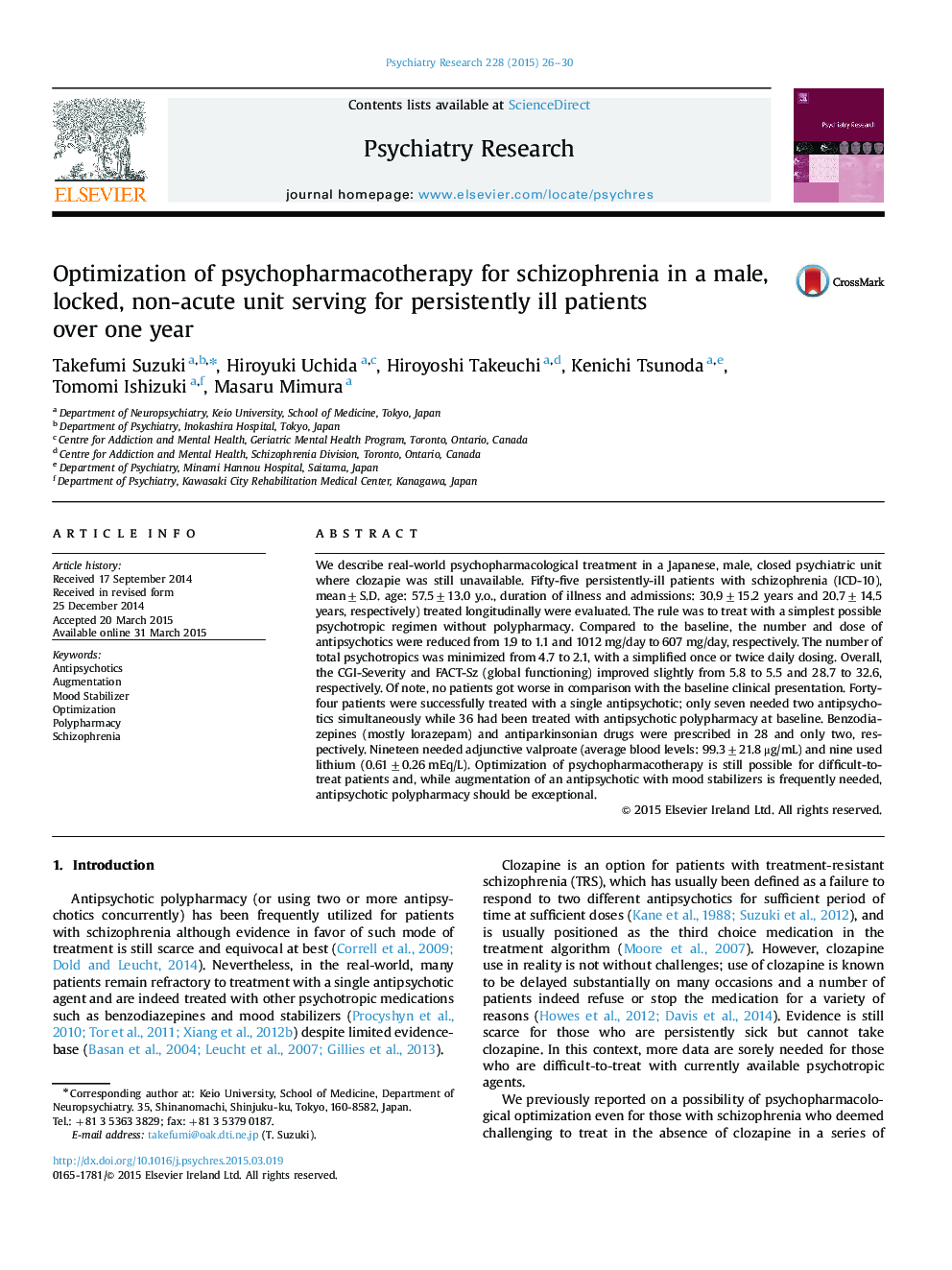| کد مقاله | کد نشریه | سال انتشار | مقاله انگلیسی | نسخه تمام متن |
|---|---|---|---|---|
| 332899 | 545874 | 2015 | 5 صفحه PDF | دانلود رایگان |
• Difficult schizophrenia patients are mostly manageable with a single antipsychotic.
• They often need adjunctive psychotropics like mood stabilizers and benzodiazepines.
• Optimization of psychopharmacotherapy is still possible for challenging patients.
We describe real-world psychopharmacological treatment in a Japanese, male, closed psychiatric unit where clozapie was still unavailable. Fifty-five persistently-ill patients with schizophrenia (ICD-10), mean±S.D. age: 57.5±13.0 y.o., duration of illness and admissions: 30.9±15.2 years and 20.7±14.5 years, respectively) treated longitudinally were evaluated. The rule was to treat with a simplest possible psychotropic regimen without polypharmacy. Compared to the baseline, the number and dose of antipsychotics were reduced from 1.9 to 1.1 and 1012 mg/day to 607 mg/day, respectively. The number of total psychotropics was minimized from 4.7 to 2.1, with a simplified once or twice daily dosing. Overall, the CGI-Severity and FACT-Sz (global functioning) improved slightly from 5.8 to 5.5 and 28.7 to 32.6, respectively. Of note, no patients got worse in comparison with the baseline clinical presentation. Forty-four patients were successfully treated with a single antipsychotic; only seven needed two antipsychotics simultaneously while 36 had been treated with antipsychotic polypharmacy at baseline. Benzodiazepines (mostly lorazepam) and antiparkinsonian drugs were prescribed in 28 and only two, respectively. Nineteen needed adjunctive valproate (average blood levels: 99.3±21.8 μg/mL) and nine used lithium (0.61±0.26 mEq/L). Optimization of psychopharmacotherapy is still possible for difficult-to-treat patients and, while augmentation of an antipsychotic with mood stabilizers is frequently needed, antipsychotic polypharmacy should be exceptional.
Journal: Psychiatry Research - Volume 228, Issue 1, 30 July 2015, Pages 26–30
